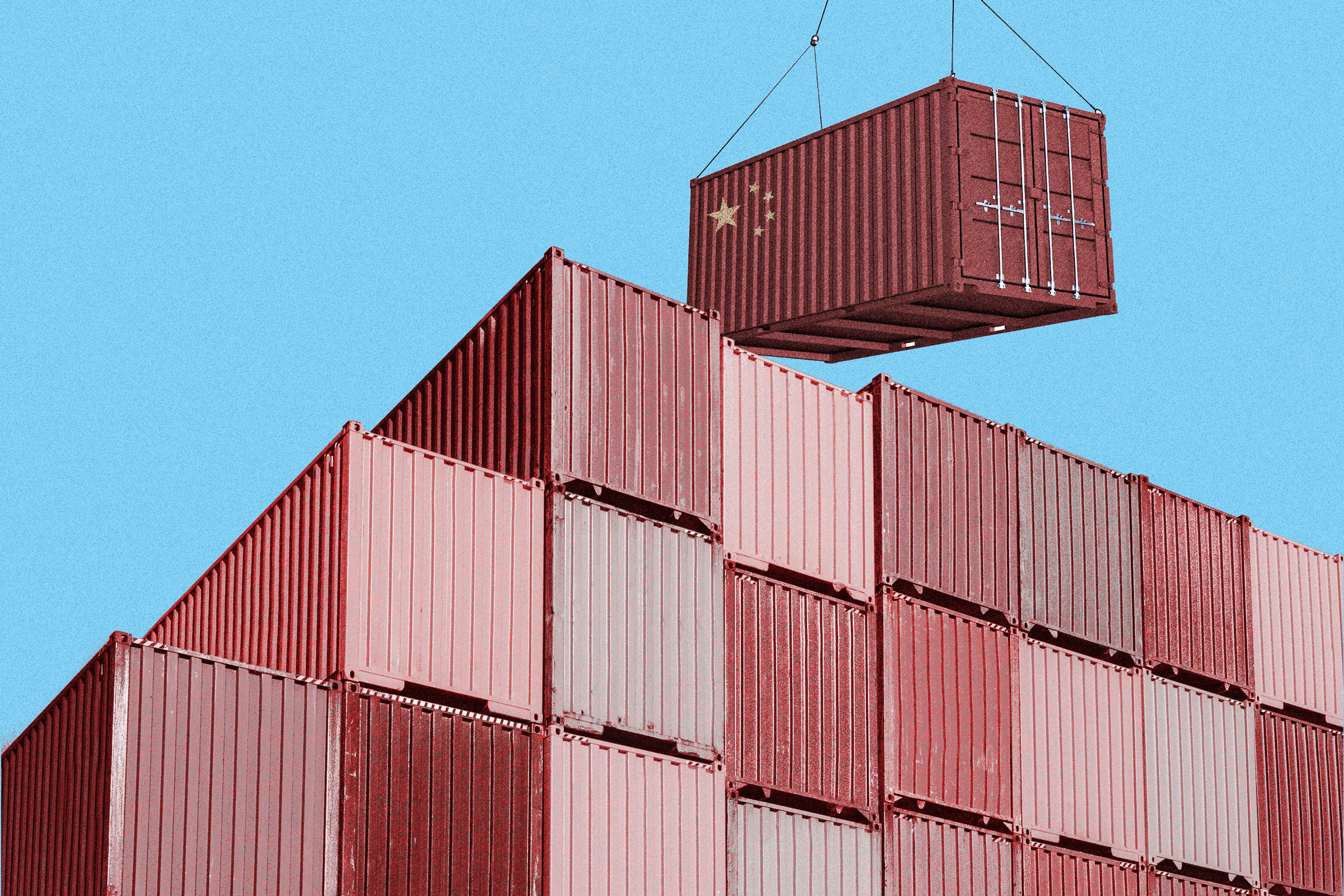China’s exporters are scrambling to find domestic buyers for their consumer goods as orders from the United States have dried up during an escalating trade war.
On Chinese social media platforms, exporters joined the domestic direct-to-consumer livestream market, attempting to offload products that were initially meant for foreign customers. Some factories have slowed or halted production.
A raft of China’s e-commerce giants launched plans to help exporters pivot toward domestic markets, but some experts say China’s domestic consumers won’t be able to fill the gap.
If the trade war persists, “the damage to the Chinese economy will be far greater than the impact to the U.S. economy,” U.S.-based China affairs commentator Wang He told The Epoch Times.
Decreased Shipping
Ma Linhai, owner of women’s fashion brand Geling, began live streaming at a container yard in Shenzhen on April 11. In short videos published up to April 22 on Douyin, China’s version of TikTok, Ma and one of his employees said the company had 10 containers of clothing stranded at the container yard, costing thousands of yuan a day in storage fees. Ma said he was clearing the stock at an 80 percent discount.On the app Xiaohongshu, or Rednote, dozens of sellers have broadcast livestream videos showing goods produced for U.S. customers that they could no longer sell because of the high U.S. tariff rates.
In one livestream, a user with the handle “Dingding Cloud Foreign Trade Warehouse,” who was trying to sell small appliances including rice cookers, told viewers: “The U.S. has breached its contract. No more shipments! Everything is on sale at 90 percent off!”
In another video, uploaded by user “Muzi Has Good Goods,” a seller hawked appliances while surrounded by boxes marked “trade transit containers,” saying the company had no more space in its warehouse because of orders it could no longer send to the United States.
The increase was driven by “particularly high” cancellations on the Asia-West Coast North America and the Transatlantic routes, which was caused by importer hesitancy amid tariff uncertainty, the brief said.

“Booking cancellations continue to climb, with some vessels potentially departing China with significant empty space through May,” the report said. “Ongoing uncertainty surrounding US–China tariffs has left cargo owners scrambling to offset rising costs, leading many to cancel shipments or halt cargo at the point of origin.”
On April 20, China’s Huatai Futures said in its weekly shipping report that it had tracked eight ships that were redirected to Europe from U.S. routes. It suggested investors watch whether more ships change routes.
U.S.-based economist Davy Wong told The Epoch Times that the decrease in shipping is a warning sign for China’s export-driven economy.
“If port throughput fell, it indicates that the flow of capital and cargo has been broken. It’s not simply an adjustment of logistics,” he said.
Production Halt
Some Chinese workers have taken to social media to complain about being furloughed and even post the notices from their companies.In one letter dated March 31 and posted to social media, employees of a clothing factory were told to take two weeks off on minimum wage, and that the resumption of production depends on whether any orders are received. Another letter dated Feb. 10 says employees at an electronics maker would be put on furlough until May 10 because the company had no orders.
The Epoch Times has been unable to contact the companies for more information.
On April 17, a supervisor at a Chinese textile factory, whose identity has been withheld for his protection, told a Chinese Epoch Times reporter who posed as an interested party that his factory has lost about half of its orders, and that employees’ pay has also been halved.

The supervisor, who has worked at the factory for more than three decades, said most of the factory’s products were exported to the United States via Vietnam, and the amount of daily production has recently decreased from 80 metric tons to between 30 and 40 metric tons.
“We used to produce at full capacity. Now we have to take every other day off,” he said.
The factory also exports to Japan, the European Union, and South America, he said, but “now that the economic environment isn’t great, everyone stopped buying.”
“The whole world is worried about the trade war. They’ve all stopped spending,” he said.
Transition to Domestic Market
Taiwanese economist Edward Huang said if the trade war continues to escalate, more supply chains are likely to move away from China.If that’s the case, China’s economy will “continue to hemorrhage,” unless its domestic demand can compensate, he told The Epoch Times. “But it appears impossible in the short term.”

Wong noted that domestic demand will also be impacted as unemployment rises.
More than a dozen Chinese retail giants have announced measures to alleviate pressure on exporters.
JD.com promised to spend at least 200 billion yuan ($27.4 billion) over the next year to buy goods from exporters. Freshippo, a subsidiary of Alibaba, also launched a “green lane” to simplify the process for exporters to sell to domestic markets on its platform.
Yang Xianghong, CEO of a business consultancy in Guangzhou, China, said exporters won’t be able to compete because businesses are already embroiled in a price war in the domestic market.
“The high quality of export products is not very compatible with the domestic market. Most domestic consumers are sensitive to prices above all else,” he wrote in a post on Weibo on April 14. He added that the influx of new competitors will exacerbate the race to the bottom.














